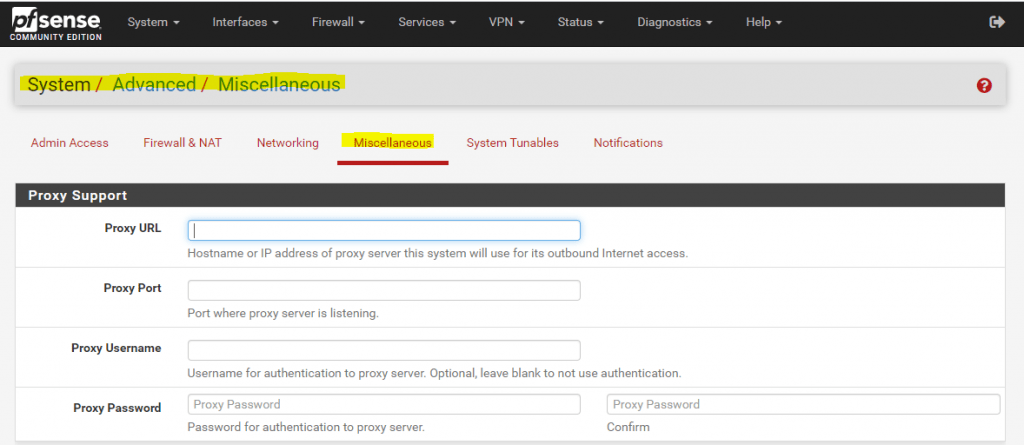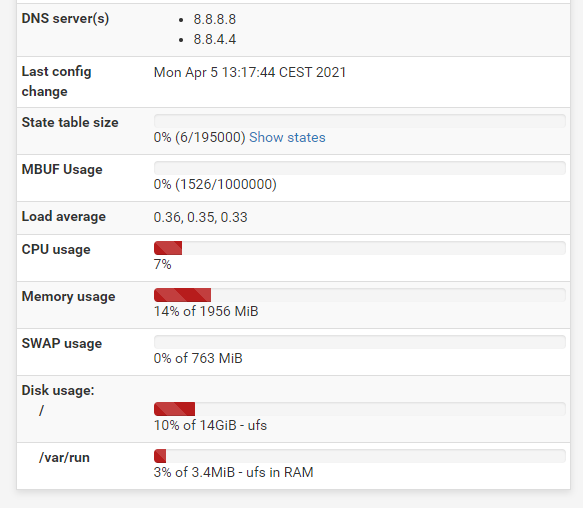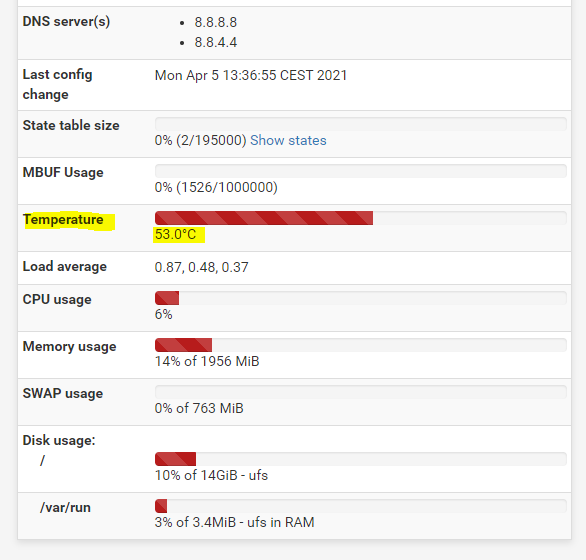pfSense – enable the Thermal Sensors to display the CPU Temperature on the Dashboard
By default in pfSense only ACPI-compliant motherboard sensors are enabled.
Advanced Configuration and Power Interface (ACPI)
https://en.wikipedia.org/wiki/Advanced_Configuration_and_Power_Interface
If the actual temperature from the pfSense appliances CPU is not shown up in the dashboard from pfSense, you have to go to the following menu to change this to a supported sensor.
System -> Advanced -> Miscellaneous -> Cryptographic & Thermal Hardware

With a supported CPU, selecting a thermal sensor will load the appropriate driver to read its temperature. Setting this to None will attempt to read the temperature from an ACPI-compliant motherboard sensor instead, if one is present. If there is not a supported thermal sensor chip in the system, this option will have no effect. To unload the selected module, set this option to none and then reboot.
In my case I use an PC-Engine APU1D-Bundle Board with an AMD Embedded G-Series CPU

By default with None/ACPI the temperature is not shown up in the dashboard

After switching to AMD K8, K10 and K11 CPU on-die thermal sensor the temperature from the CPU is shown up in the dashboard under System Information.

In case you wonder what is the normal temperature, for APU boards mostly this is in idle status around 60°C but can under high cpu usage rise up to 70°C .
APU2, APU3 and APU4 have the same 4 core GX-412TC CPU that is designed to be passively cooled, and work stable up to 90°C.
Links
What is a normal temperature for CPU on APU boards?
https://teklager.se/en/knowledge-base/cpu-temperature-apu-board-apu2-router/
Advanced Configuration and Power Interface (ACPI)
https://en.wikipedia.org/wiki/Advanced_Configuration_and_Power_Interface
VARIA STORE – APU Boards
https://www.varia-store.com/de/hersteller/70-pc-engines.html



